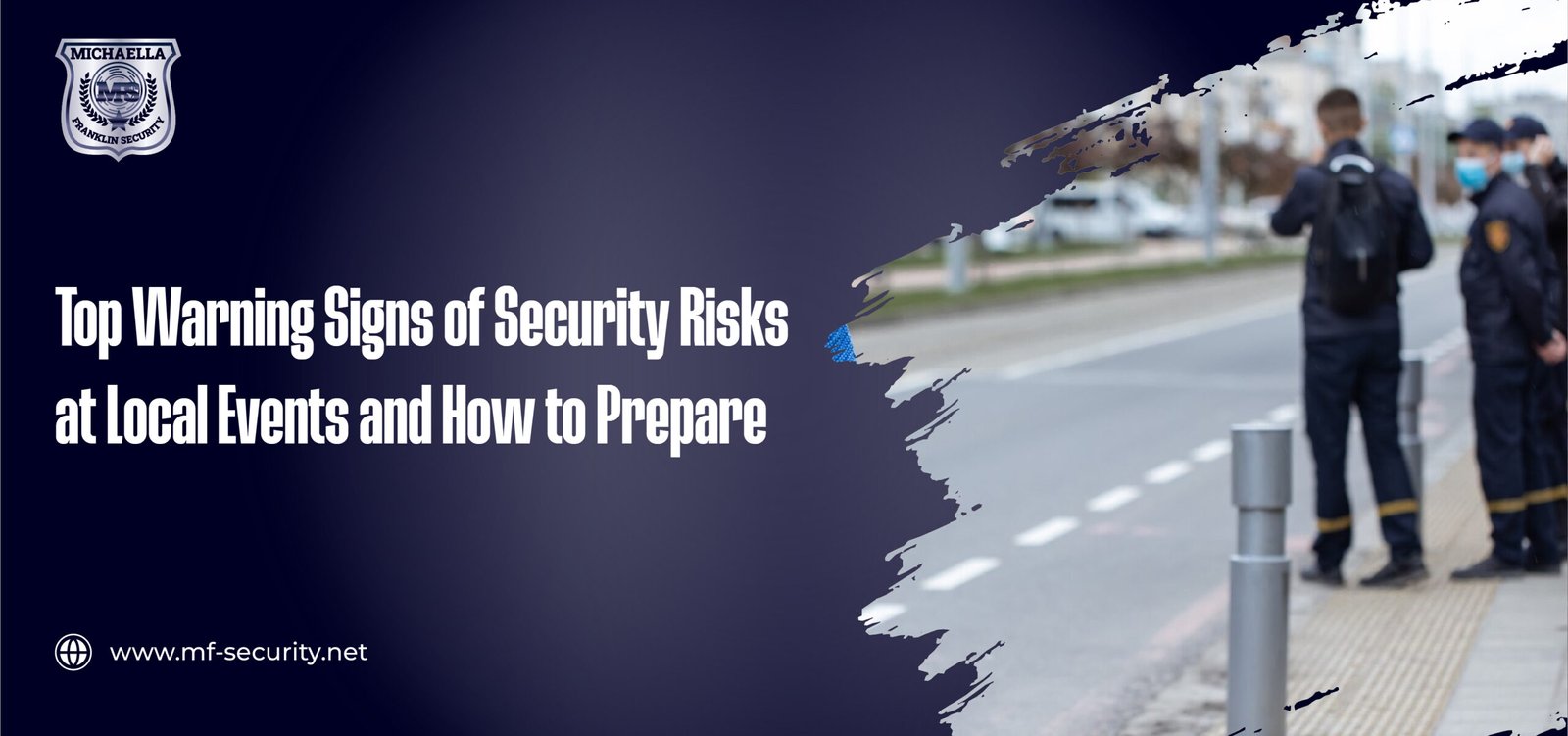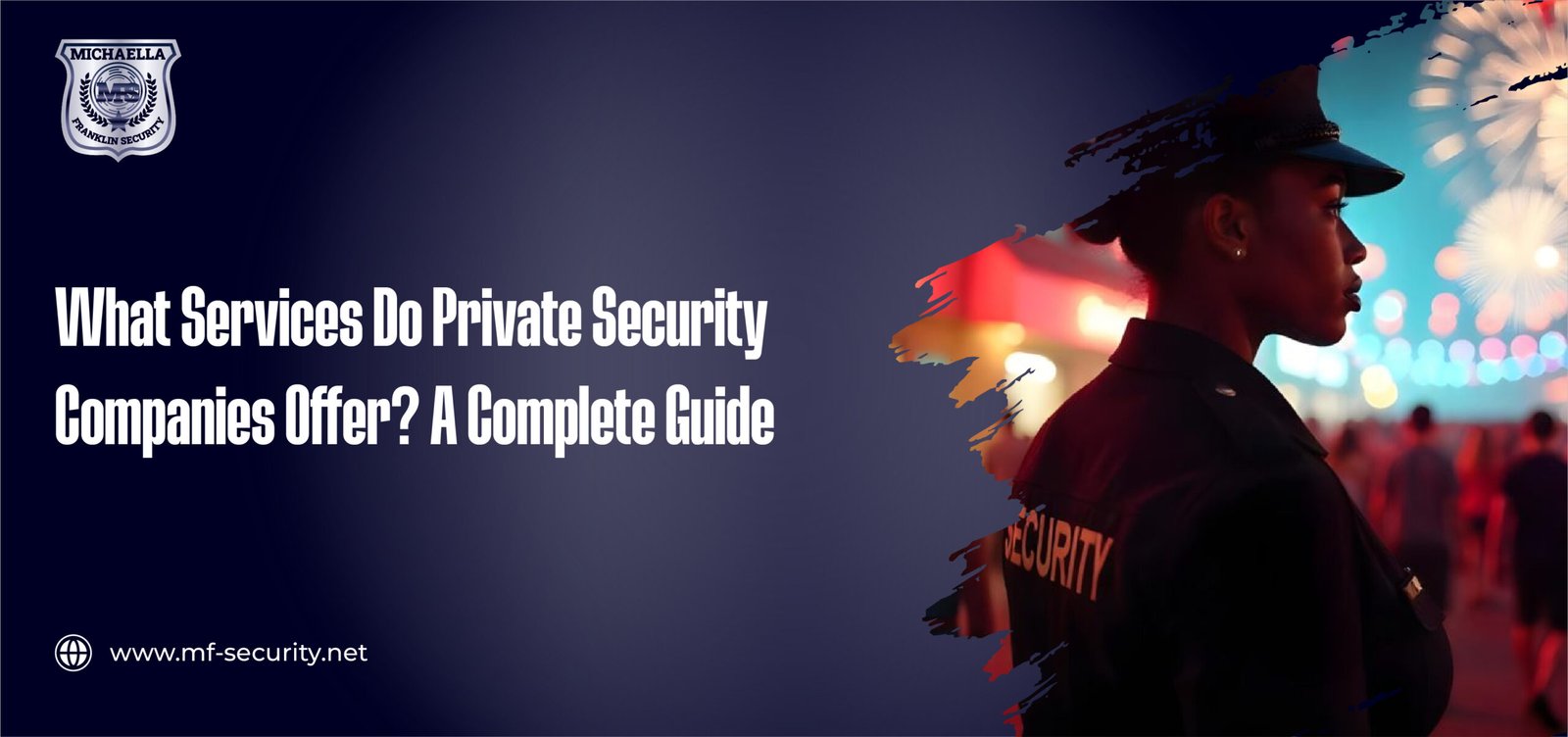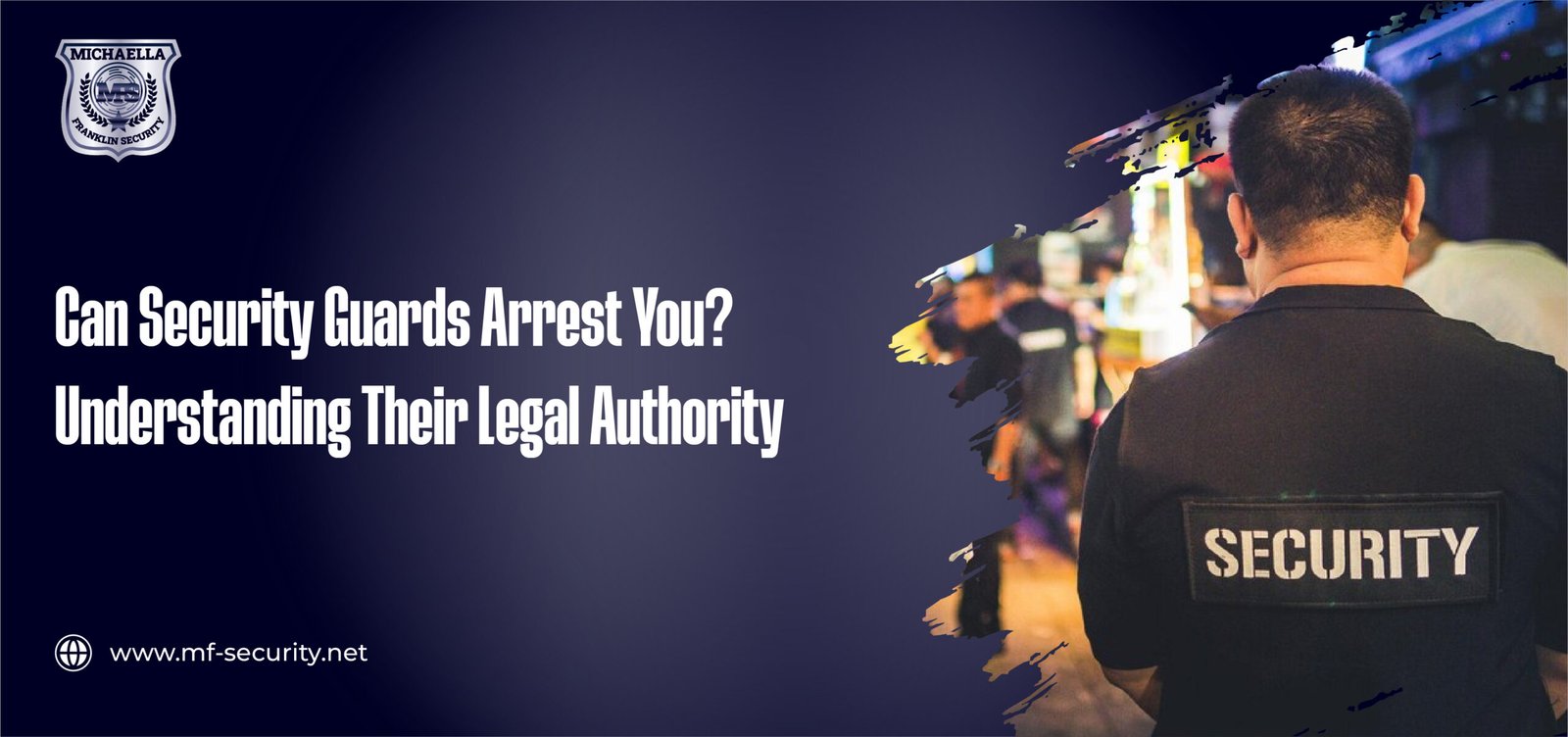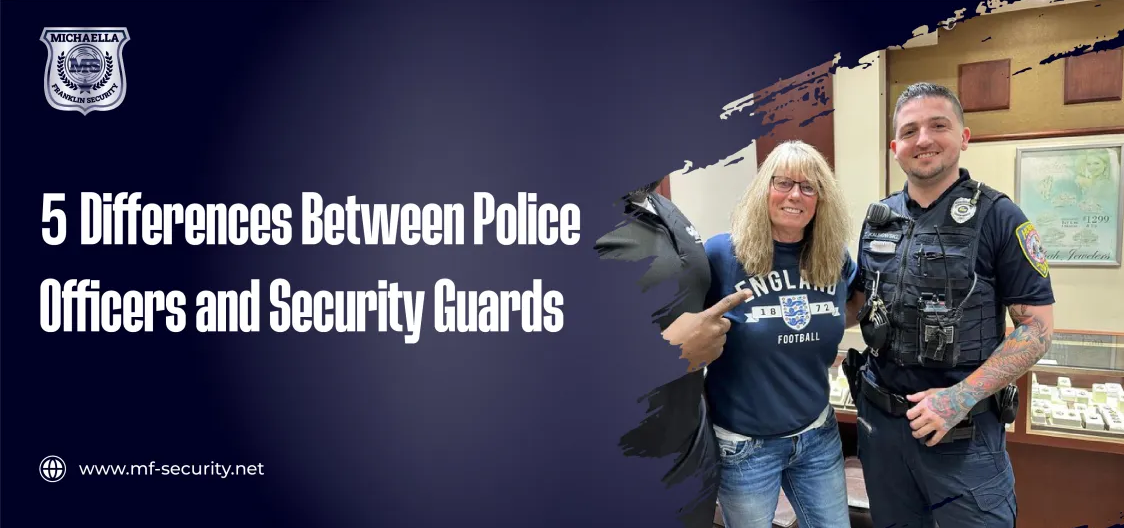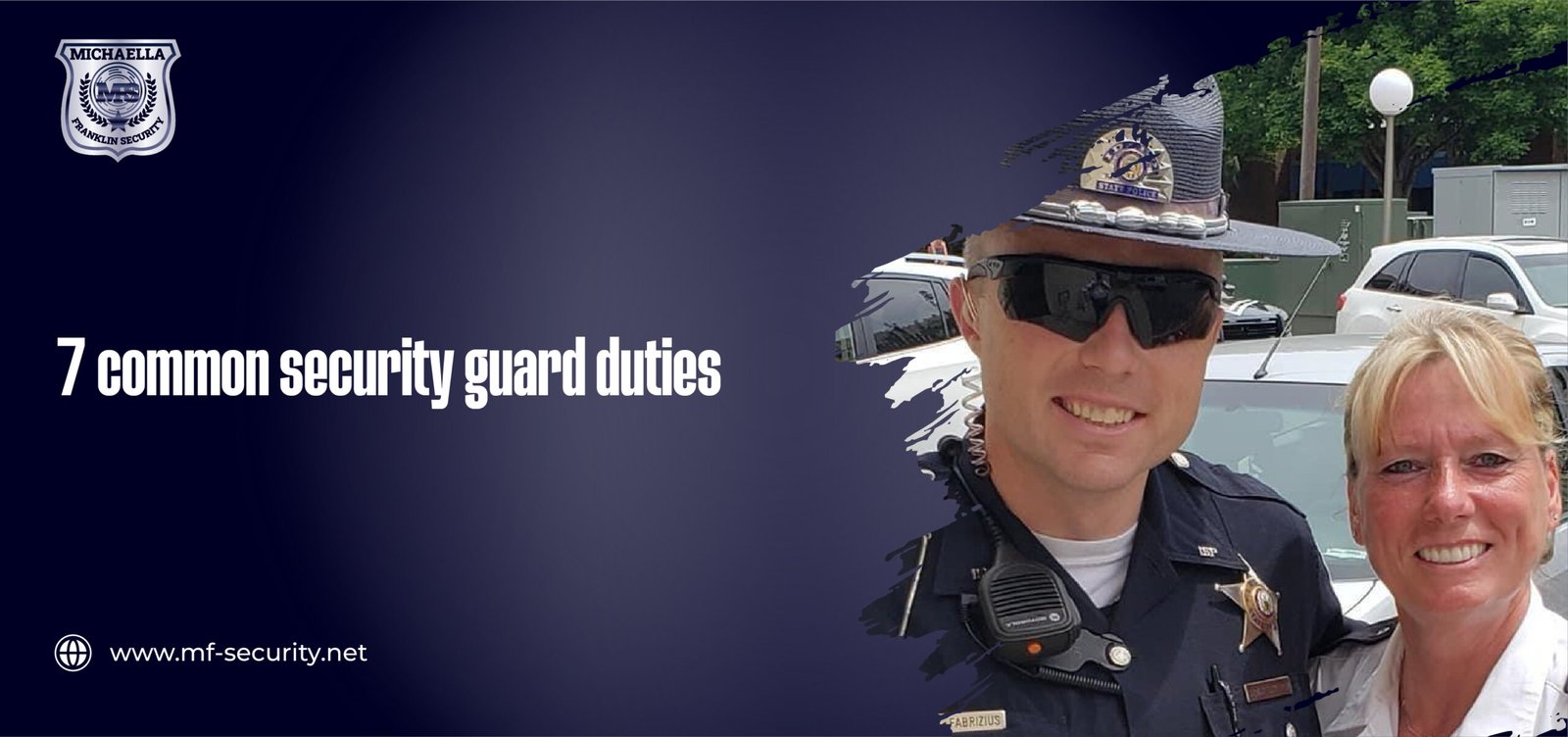Event crowd management is a crucial part of any successful gathering. At Michaella Franklin Security Inc, we know that managing crowds effectively is key to keeping local events in Boise, Twin Falls, and veteran communities safe and enjoyable.
School fairs and food festivals, as well as parades, community rallies, and charity fundraisers, all belong to local events, which are an essential component of your social life. They promote unity, embody culture, and entertain both neighbors and families. Nonetheless, they are not devoid of any security threats, even though they are sometimes regarded as those that pose minimal risks in relation to the major concerts or sports. As a matter of fact, sometimes there could be a lax mood at the small events, which could make them very interesting towards opportunist behavior or destructiveness.
The key to the safety of all participants is the identification of early warning signs of security risks and preparation. These signs should be known to the organizers, volunteers, and even the attendees, and they should have a proactive approach to handling them.
Suspicious Behavior and Loitering
Unusual or suspicious behavior is one of the most evident preliminary signs of a possible security threat. This might comprise people waiting out at places they have no reason to be there, in a jittery fashion, not making eye contact, or staring fondly at the security person or in/out ports. In other cases, that conduct may not be threatening; however, trained security guards understand how to make a situational evaluation and also judge whether some further measures should be taken.
Too much interest in watch gear, attempts to visit restricted sections, or loitering with no obvious intent to do so should be a warning sign. What early detection does is that it provides organizers with an opportunity to go through people secretly, examine their purpose, and avert the trouble before it can take course.
Unattended Bags or Packages
Among the deadliest security risks, but one of the easiest to spot, especially in busy places, is the sight of unattended baggage, boxes, or even backpacks. Although the majority of the forgotten items are completely harmless, they should never be taken lightly.
There should be evident reporting, assessment, and treatment of unattended objects. All that can be done is hiring announcements, signs, and trained volunteers who can increase awareness of those present to notify security personnel of anything suspicious before panic sets in.
Plan smart. Stay safe. Explore our high-risk event security services now.
Overcrowding and Lack of Flow Control
Even the best-planned events can be undermined by poor crowd management. Overcrowding in narrow spaces, blocked exits, or a lack of clear signage can lead to frustration, confusion, and even stampedes in emergencies. When attendees cannot move freely or find their way, tensions rise, increasing the likelihood of arguments or medical emergencies.
Monitoring foot traffic, using barriers and directional signs, and having a clear evacuation plan are vital components of event safety. If bottlenecks or congestion start forming, quick action can prevent larger issues.
Conflicts or Verbal Altercations
Another key warning sign of developing security risks is the emergence of verbal conflicts or minor disputes among attendees. What starts as a disagreement over seating, queue jumping, or noise levels can escalate quickly in a crowded environment.
Organizers should ensure that there are trained personnel or volunteers who know how to mediate and de-escalate tense interactions. Promptly addressing disputes with calm, authoritative intervention prevents small conflicts from growing into larger disturbances.
Lack of Visible Security Presence
Even having little or no visible security can become an issue. Disruptive participants are likely to have no fear of misbehaving when they do not see the authority figures notice. The presence of a confident, friendly, and professional uniformed or volunteer staff, or event stewards, is a deterrence and reassurance to those people in attendance.
The point is not a strong force but a harmonious balance so that the guests feel safe and the potential troublemakers hesitate.
Don’t risk your event’s safety—learn how our professional team can help with crowd management.
Alcohol in excess.
When the event is an alcohol serving, there might be a serious security threat because of excess alcohol consumption. The drunkards find themselves most likely to act in a reckless or even violent manner, and they will also be considered to be in a poorer condition to react to emergency situations.
This risk can be minimized by having clear policies about serving alcohol, age checks, and quantity restrictions. In addition to being equipped with cases of intoxication and how to intervene safely, security personnel should also be trained to monitor these aspects.
Technical Failures and Communication Breakdowns
At other times, the warning signals may not be given by human beings, but by technical systems. When the PA system fails, lights malfunction, or the communication between employees and other organizers breaks down, it may easily cause confusion or panic. Such problems, even though not direct threats in general, can lead to a disaster under an emergency situation should there exist a poor coordination stance or a communication breakdown.
It is always important to test all systems before the event and set up a backup plan, such as radios and mobile devices, or in fact signal-based systems, in case the main tools fail.
Inconsistent Entry or Screening Procedures
Security risks can also stem from weak or inconsistent entry protocols. If some entrances are loosely monitored or if security checks are skipped for certain groups, it creates vulnerabilities. Individuals with harmful intentions often look for the easiest access point, and inconsistent procedures provide just that.
Set up standardized screening at all entrances, whether it’s bag checks, metal detectors, or ID verification. Even simple wristbands or ticketing systems can help organizers keep track of who is entering and exiting the event.
How to Prepare Effectively
Recognizing these warning signs is only half the equation. The other half lies in proactive preparation. Here are essential steps for improving event readiness:
- Carry out a Threat Assessment
Prior to the occasion, consider potential risks depending on the venue, the number of people attending, the type, and the activities involved. This assists in the prioritization of security arrangements and resources.
- Educate your Employees and Volunteers
Make sure that all the involved individuals are aware of how to identify security risks, how to discuss the issues with the authorities, and how to act according to the instructions. Short briefing and drill performances can get so far as the efficiency of the reaction.
- Determine a Chain of Command
Assign well-defined roles and responsibilities. To whom are staff members responsible? Who makes decisions in emergency situations? Matters are taken care of within a chain of command, hence responses are rapid and timely.
- Make a Communication Plan
It can be through walkie-talkies, a group messaging app, or a specific help desk, but there is supposed to be effective communication between organizers of an event, security, and emergency units.
- Local Authorities Liaison
Early in your planning, involve the local police, fire department, or medical responders. They can offer advice, provide instant assistance on the spot, or sometimes wait to help with severe cases.
- Create Awareness among the Event Participants
Promote a culture of see something or say something. The attendees must be empowered to raise their input or concerns without fear of embarrassment.
- Emergency Planning
The evacuation plan should be strongly communicated, have first aid points, and have emergency medical assistance. Also, be ready to control weather-related incidents, especially outdoor events.
Conclusion
The causes of security risks at local events are complex combinations of societal reactions, environment, and the establishment’s mismanagement. However, through careful observation and preparation, most of the incidents can be avoided or even stopped before they can injure anyone. Organizers will be able to get ahead of the game by learning about the most common warning signs, which range from mysterious activity and technical malfunctions to crowds too large to pass through and vocal disagreements.
Secure your event with expert crowd management—contact Michaella Franklin Security Inc today!

